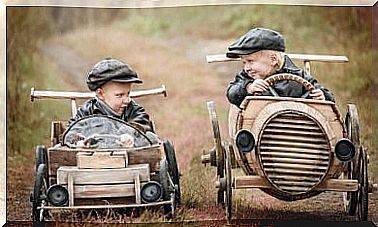Explanatory Elements Of Depression

The genesis of depression is a phenomenon studied by psychology, but that many times does not seem so clear when interpreting. In fact, many origins are attributed to this mood disorder, some erroneous and others even based on stereotypes, which can negatively influence its understanding.
For this reason, and due to the prevalence of depression, it is important to know the explanatory elements of this mood disorder, in which the biological dimensions or the structural characteristics of the person seem to play a fundamental role.

Is depression inherited?
Hearing that depression is inherited and that having a depressed parent is enough to make you depressed in the future is very common. However, some studies suggest otherwise.
Sullivan (2002) studied the different subtypes of depression in twins. He found that to some extent depression is heritable. He attributed to genetics between 31 and 42% of the genesis of depression.
Thus, it can be observed that almost up to 70% of the explanation is not genetic. The value of this is moderate. Finally, when specific loci have been searched, that is, specific genes that could have depressive information, none were clear.
Lewinsohn and the lack of contingent reinforcement
Heirs of Skinner, Lewinsohn, and Ferster attribute depression, among other things, to the loss or lack of positive reinforcement contingent on behavior. For this reason, its explanatory elements of depression are based on a generalized reduction in the frequency of behaviors, a consequence of non-reinforcement.
People’s environment can change. It doesn’t have to be a stressful life event, like the loss of a loved one. For example, the arrival of a child, a change of job, the exodus of friends to another country or changes in the body can influence us.
When certain behaviors are not reinforced by the medium, some of them may disappear. By not obtaining the usual reinforcement that was obtained, these are no longer emitted and the general activity decreases.
It is at that moment when we can talk about the spiral of depression: activity decreases, you stop doing things, there is no exposure to reinforcement, and you begin to feel worse. The rest of the consequences are due to the spiral of depression, according to Lewinshon.
Finally, the structural characteristics of the person must be taken into account. If your environment has changed and your strength is not social skills or you often have difficulty solving problems, entering the spiral of depression can be easier and exit, more intricate.
General model of depression: adaptation
This model focuses on the learning history of the person who has learned to respond to difficult situations in a maladaptive way. This does not mean that its mechanisms are not good, but that they are not working to respond to the demands of the changing environment.
They can be people with difficulties in solving problems, with deficits in their self-control or who have a high neuroticism.
These difficulties in their learning history act as explanatory elements for depression, since they constitute a vulnerability. Thus, when there are stressors in between and there is that basis of vulnerability, depression can appear.
For example, a punctual and acute event may occur – more common at the beginning of a depressive condition – that together with that vulnerability and without social relationships that support the person or positive changes in their life, this can enter the situation again. spiral of depression.
If, on the contrary, the individual had family support and a great social understanding, perhaps they would not fall into that spiral, even if they were vulnerable at some point in their life.
When the environment is not supportive
If the environment does not support the person who begins to find himself in that depressive spiral, interpersonal problems can be aggravated. Irrational thoughts begin to be more intrusive, people stop carrying out more activities, feelings of guilt surface, low self-esteem corrodes …
At that time, feelings of helplessness may appear. The person is sad, cries, does not leave the house … These dysfunctional strategies, but strategies that seek to obtain a response from the environment, do not seem to be useful.
For this reason, the person, who does not know more than these types of strategies or who is unable to carry out others at that time, may feel that he is not capable of controlling his environment. And so, the environment, the environment, the environment and the family become hostile, uncontrollable, unpredictable.
Attributional styles and helplessness
It is easier for depression to occur when the person has internal attributional styles. This means that if the individual associates internal failures and external successes, it is easier for feelings of helplessness and unmanageable to occur.
The uncontrollable is extrapolated to any situation. The person will think that there is nothing they can do to make dinner with their friends go well, to have a good time at a party or to have a good day.
In this case, learned helplessness is experienced. It is a state in which negative results are attributed to oneself, in addition to negative future events, which affects the self-esteem and self-concept of the person (” I am a disaster “, ” I am worth nothing “) .

Conclusions: is it useful to explain depression?
These explanatory elements of depression lead us to focus treatment on the key points of its genesis.
Focusing treatment on behavioral activation and enjoyable activities can be effective, as it aims to get the person out of the spiral of depression.
From the general model of depression, we can see how the internal attributional style is not adequate to approximate problem solving.
Therefore, it is possible to influence having a balanced attributional style, in which the person has to some extent something to say in relation to their successes, but where the environment is also taken into account as a means that influences the results.









